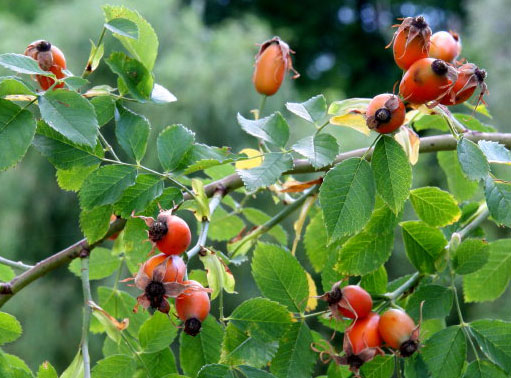WILD ROSE

The wild rose is a multi-branched and thorny perennial shrub, reaching a height of 1-3 meters, and belongs to the Rosaceae family. This plant group is found in temperate regions in both hemispheres, and there are over 100 species of. Rosa canina has pink or white flowers, with few leaves and a lot of fragrance. Its petals are sparse and its fruit is known as a “rosehip”. It ripens in late summer to autumn, and is food for birds and other small mammals. The wild rose is a shrub native to slopes and glades. Its stem is multi-branched and spiny, its leaves are lanceolate and serrated, the fruits are red and ovoid with many seeds, the rosettes, and flowers are white or pink. It blooms in spring and is used parts are flowers and fruits.
The fruits and flowers contain a large amount of vitamin and therefore it is a first class antiscurvy and medicine for rickets. The decoction is considered an ideal tonic for infections of the respiratory system, synachia, weakness, anorexia and indigestion. It has astringent properties and helps fight diarrhea and intestinal colic. It is also considered a very effective antiseptic for infections and irritations of the eyelids and eyes. The essential oil is considered very pure and safe to use.
The fruits of the wild rose contain: calcium citrates citric acid iron malic acid niacin organic acids pectin phosphorus resin sugars tannin Vitamin A Vitamin B1 Vitamin B2 Vitamin C Vitamin E Vitamin K Vitamin P.
Rose oil is mainly made from the Damasks and Gallicas varieties and is very expensive. It is considered very pure and safe to use. It nourishes, soothes and heals the skin. Petals are used in salves for hands, lips and ulcers.
